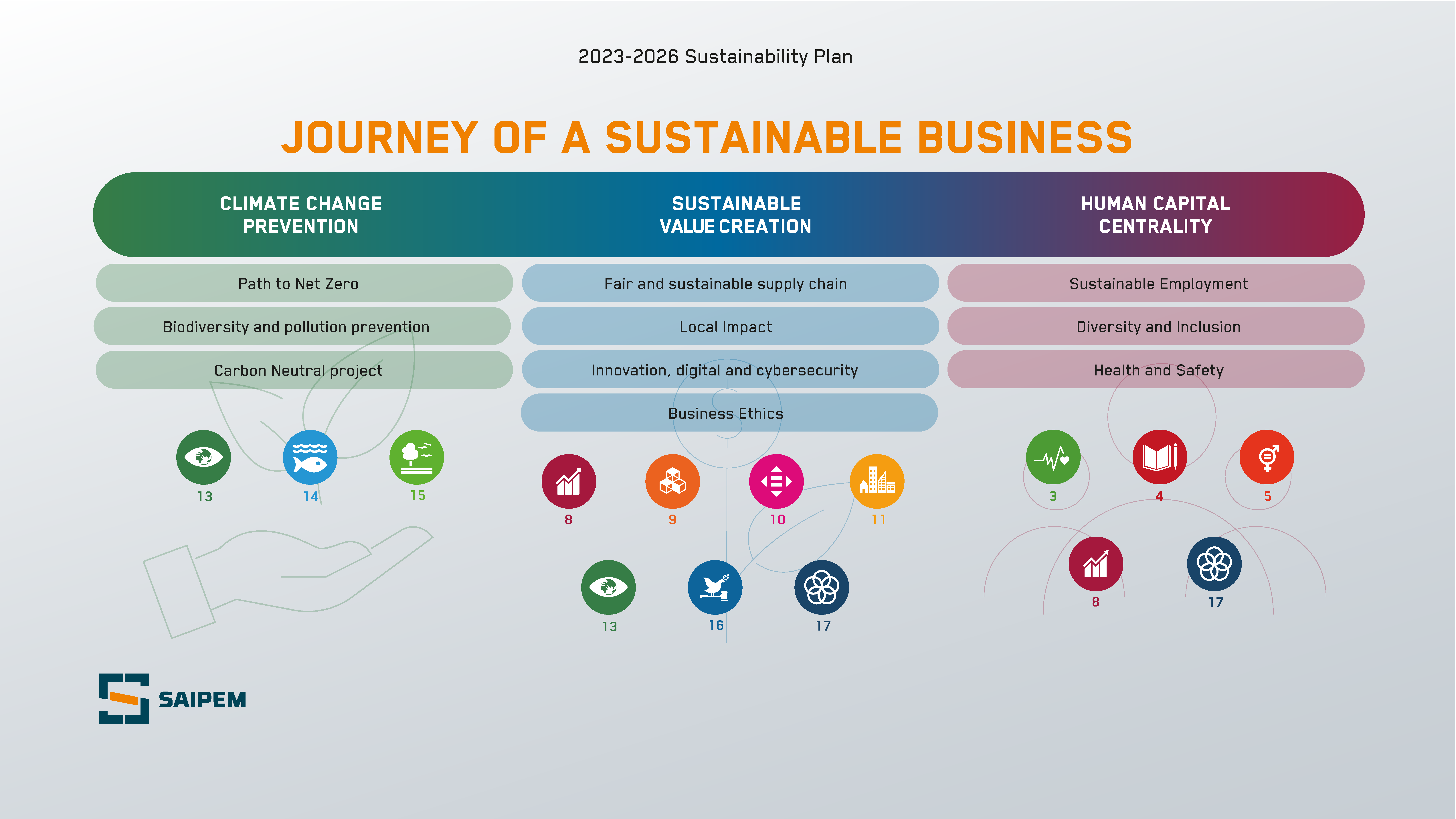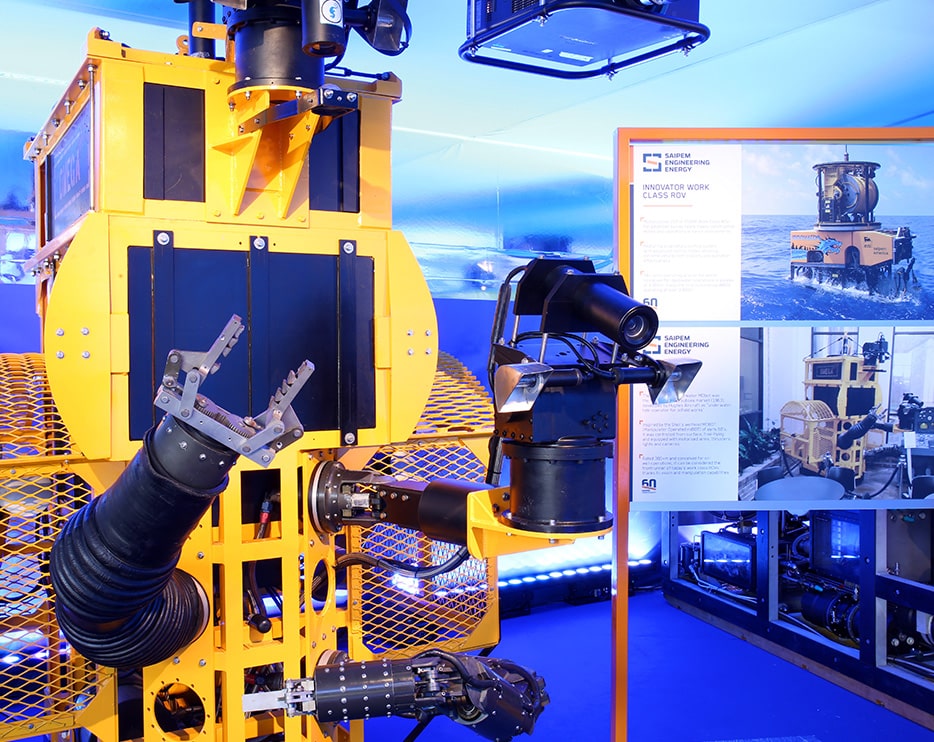The twin priorities of the energy transition and climate protection set the scenario through which world must navigate.
In this context, energy infrastructure becomes the most important driver for sustainable development.
Operations for a sustainable future
At Saipem, we address the energy transition as one of the pillars of our strategic plan with a dual business and sustainable approach.
On the one hand, we put ourselves forward on an operational level as the technical partner of energy companies – helping them to implement their programmes and meet the sustainability constraints that are also posed by the financial world in the context of complex projects on green or transitional energy carriers, such as biomethane and liquefied natural gas.
On the other hand, we provide systems, solutions and services with a high digital and technological content, in response to trends in distributed energy generation and, therefore, also as a strategic Net Zero partner.
Based on our skills and technologies, by making innovative design, engineering and technological solutions available to our customers and actively engaging our suppliers, we are contributing to carbon neutrality across the entire value chain.
Saipem’s Sustainability Plan
The coordinates to follow for the new sustainability strategy that must underpin the energy transition are set out in the goals of the UN 2030 Agenda and in the 10 principles of the UN Global Compact.
In pursuing our corporate goal as an enabler of the energy transition, our commitment and medium-long term systemic vision translate into the actions and projects in the Saipem Sustainability Plan, "Journey to a sustainable business".
The Sustainability Plan, which covers the four-year period 2023–26, reflects one of the founding principles of Saipem's strategic plan, namely the energy transition. The Plan will guide a strategy integrating economic-financial goals with ESG goals (environmental, social and governance) creating both short and long-term value for all stakeholders.
The Plan analyses the key factors of change in the long-term transformation of Saipem from an ESG perspective: from sustainability as a strategic lever to sustainability as a strategic priority.

The sustainability goals in the Plan are updated annually, based on their actual achievement, the results of the materiality analysis and any needs arising from the business, market, legislator or the socio-economic context.
The Plan is divided into 10 strategic ESG areas, indicating for each specific objectives and related implementation plans: Path to Net Zero, Biodiversity and pollution prevention, Carbon Neutral project, Sustainable employment, Diversity and Inclusion, Health and Safety, Local Impact, Fair and responsible supply chain, Business Ethics, Innovation, digital and cybersecurity. The main objectives of the strategic areas are illustrated in the dedicated page.
Risk Management
Saipem is aware that a good process for identifying, measuring, managing and monitoring the main risk areas, including ESG risks, contributes to ensuring that the company is run in a sound and correct manner, consistent with the strategic objectives.
For more information on how Saipem is committed to promoting and maintaining an adequate internal control and risk management system, go to this page.




